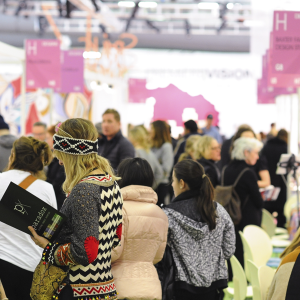
In September. a new version of Première vision Paris It was carried out with more than 2,000 exhibitors and a solid proposal in terms of design and conceptuality based on innovation. maybe this year the audience is down by more than 8% compared to previous years, but Première vision does not stop surprising with a few tricks up its sleeve that promises and that undoubtedly takes us to the future of the fabric market in the world.
The 3 main courses: the launch of Vision marketplace, smart square and the marine debate in the industry.
Vision market place:
A B2B online platform provisioning that will for a faster manufacturing collection. The offer of new products doesn’t pretend to replace the fair but to join forces with it. how does it work? Potential buyers will have access to the offer throughout the year, may also seek inspiration, ask for samples and even, as a next step, close orders directly from the marketplace. During the year 2019 leather and accessory sections will be added
Smart Square: the surprise that many did not expect
A big discovery was the smart square located in pavilion 3 of Première vision, which generated a focus of future ideas in relation to sustainability. Within the performance of the fair, highlighted CLASS (Creativity Lifestyle and Sustainable Synergy) an Italian group that since 2007 works in favor of innovation through partnership, laboratory, education, and e-commerce which is aimed at small entrepreneurs, students, and designers who do not have access to high-ranking suppliers.
The Circular Economy was present within the projection edges for designers and distributors. they highlighted Ecotec, in which their threads are made of 80% recycled raw material, considerably reducing water consumption. Organic wool confectioners. Traceable cotton or the brand Nouva Fratelli Boretti who classify materials by color in order to ignore the dyeing process.
Marine debate on the table:
One of the most applauded was the Spanish company SEAQUAL who work their raw material through a circular economy in which fishermen pick up the plastic from the sea to be processed and create a fiber of low impact to the environment and of great useful life. They seek through the circular economy three specific tasks for success: design that includes recycling, logistics operation, and technical solutions to recycle all types of plastics.
Generatin awareness by the world was Parkey for the Oceans, ecological initiative that recovers and reuses marine plastics. The objective is based on three functions: avoid, collect and recycle. they are behind the ADIDAS shoe made with plastics extracted from the sea.
This new edition of Première visión shouts out loud the future of the industry: recycling, low impact, creativity, and opening new alternative online markets.